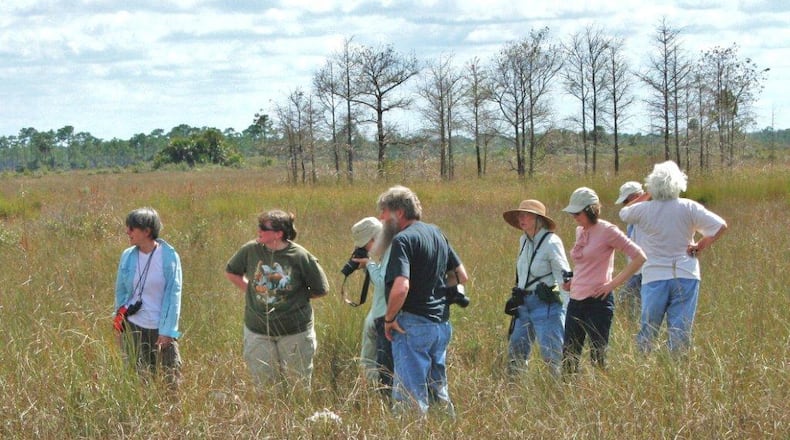Several of us Georgia Botanical Society members went a little far afield last week in our never-ending quest for botanical treasures and natural wonders. We spent a week in Florida’s Everglades National Park and the nearby Big Cypress National Preserve and Florida Keys exploring and admiring the diverse tropical flora, fauna and landscapes.
We learned that the Everglades one day might be connected to Georgia. Several conservation groups have launched an ambitious project -- the Florida Wildlife Corridor -- to link public and private natural areas across the length of Florida and connect the Everglades with the vast Okefenokee Swamp in southeast Georgia. A goal is to protect and restore the region's habitats and migration corridors essential for the survival of diverse wildlife, including wide-ranging panthers, black bears and other native species
More about that can be found at floridawildlifecorridor.org.
Meanwhile, in the Everglades, we found a rich diversity of native species even though Burmese pythons and numerous other exotic invasive species threaten ecological upheaval in the famed "River of Grass." The Everglades’ bird life, we found, is still spectacular even though it has greatly diminished over the years.
We encountered numerous alligators along the trails and even had to gingerly step around some of them. From a boardwalk in Big Cypress, we watched West Indian manatees occasionally surface for air -- unfazed by 12-foot-long alligators lurking nearby.
Being a botanical group, we were mostly interested in the Everglades' plant life, and there was a lot to capture our attention. The Everglades are a montage of plant communities -- pinelands, tropical hardwood hammocks, cypress swamps, freshwater marshes and many more. We visited many of these ecosystems and found a variety of blooming wildflowers, many of which bloom in February and even all year long.
Some of the native flowers in bloom included lavender-colored climbing aster, which can climb 15 feet or more into trees and shrubs; pink-colored pine-pink; yellow-flowered pineland acacia, sand flax, tickseed and wand goldenrod; blue-colored mistflower; and white-flowered starrush whitetop. In the sawgrass prairies were two particularly breath-taking beauties, the white-flowered string-lily and the alligator-lily.
In the hammocks, trees were filled with airplants, or bromeliads. Most noticeable was the red cardinal airplant, a beautiful but endangered plant in Florida because of an exotic Mexican weevil whose larvae kill the plant.
For more on the Georgia Botanical Society, visit: www.gabotsoc.org.
In the sky: The moon will be first quarter on Wednesday, rising out of the east around lunchtime and setting in the west around midnight, said David Dundee, an astronomer with the Tellus Science Museum. Mercury is very low in the west at dusk. Venus shines brightly in the west just after dark and will appear near the moon tonight. Mars rises out of the east a few hours before midnight. Jupiter is high in the west at dusk and will appear near the moon Sunday night. Saturn rises out of the east a few hours after midnight.
About the Author
The Latest
Featured
